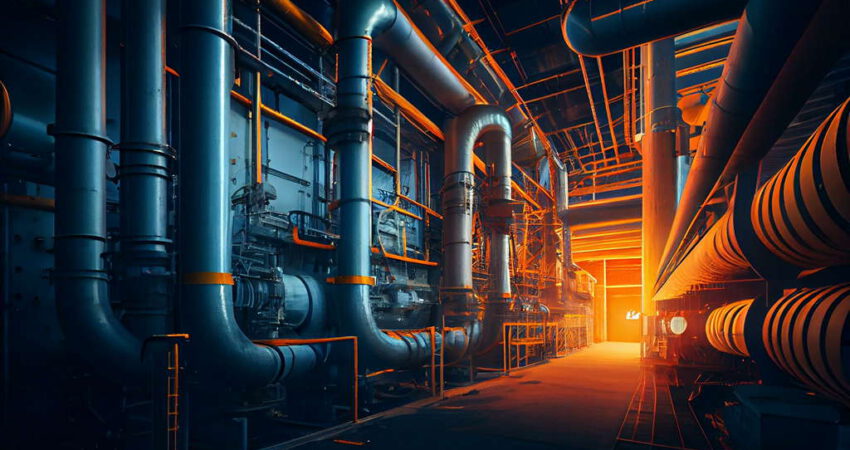Adobe Stock: 591740320
Having set itself the ambitious task of giving up bloody pipeline gas from Russia and replacing it with “freedom LNG” from across the pond, the European Union is meeting its moral obligations. However, it could unwittingly drive itself into an infrastructural trap in which it has to choose between economic and environmental collapse.
The energy situation in the European Union has become particularly difficult over the past year and raises serious questions about the balance between energy security and economic risks. The aspiration to move away from Russian gas and switch to liquefied natural gas (LNG) from other sources is confronting the European Union with a difficult choice, which experts warn could result in serious consequences for its economy.
In response to Russia’s full-scale invasion of Ukraine, the European Union has pledged itself to stop using Russian fossil fuels including oil and natural gas entirely by 2027. Many EU member states are accelerating plans to obtain gas from alternative sources, such as the United States and Qatar. Leading figures in the European Union continue to share good news with the public about a steady reduction in dependence on Russian gas: supplies to the EU from Russia are already at a relatively low level. In 2022 a quarter of gas imported into the EU at most was from Russia – in previous years this indicator remained steadily above 40%.
One of the immediate steps that European Union countries have taken to overcome the energy crisis has been increasing gas reserves in order to ensure a sufficient supply for Europe’s population. To this end, EU countries adopted a regulation in June 2022 that required EU underground gas storages to be filled to 80% of their capacity before the winter of 2022-2023 and by 90% before subsequent winter periods. The regulation was quickly implemented. In September 2022, gas reserves in EU storage facilities had already reached 80% on average. In October 2022, the filling level had reached the 90% mark. By March 2023, after the cold season, the filling level stood at around 56%, which was significantly higher than the 26% level for the same month in 2022.
“The world’s most expensive and unnecessary insurance policy”
Most experts think that the desire to fully abandon Russian gas is commendable. However, a blind bet on LNG increases infrastructure-related risks for the European economy. This is because it is already leading to its weakening and a reduction in its competitiveness in the short term, given the inevitable continual increase in spending on energy by industry and households.
Although the filling of the EU’s gas storages was carried out quickly and to high levels, research by the Institute for Energy Economics and Financial Analysis (IEEFA) shows that more than half of the planned LNG assets in Europe risk remaining idle. This could lead to huge financial losses and a deterioration in the competitiveness of the European economy: “This is the world’s most expensive and unnecessary insurance policy,” said Ana Maria Jaller-Makarewicz, energy analyst at IEEFA Europe.
In an IEEFA report published in March, the authors conclude that the insatiable appetite of the EU for new LNG projects in the coming years will significantly exceed the demand for gas. Expert assessments of this demand that are currently available are in the range of 150-190 billion cubic metres (bcm). As a result, these insufficiently thought-out and rational attempts to end the use of pipeline gas could cost European business vast sums of money.
“Europe must carefully balance its gas and LNG systems, and avoid tipping the scale from reliability to redundancy”, said Ana Maria Jaller-Makarewicz. “Boosting Europe’s LNG infrastructure will not necessarily increase reliability – there’s a tangible risk that assets could become stranded”. The highest risk of stranded assets was seen in Spain (50 bcm), Turkey (44 bcm) and the UK (40 bcm), while the IEEFA said it expects a 36% utilization rate of Europe’s LNG terminals by the end of the decade.

Adobe Stock: 26042273
“Some of the investments in LNG import infrastructure were made by markets based on the assumption that there’s always going to be demand somewhere in Europe,” stated Ogan Kose, a managing director at Accenture who specializes in gas, commenting on the topic, which has been covered in detail in the global media. “However, if every country aims to have its own import capacity, and markets are not going to operate in collaboration, then of course there will be a lot of sunken costs.”
***
In this context, it is essential to make one further remark: in the EU’s thinking, “freedom LNG” is contrasted with pipeline gas from Russia, however politicians rarely mention that Russia also supplies liquefied gas through the Novatek company. In 2022 its supplies grew by a good 60% compared to the previous year. Thus, new LNG facilities will apparently soon be supplying Russian gas to Europe again and it cannot be ruled out that this will happen in various roundabout ways.
Victims of the market
A great deal of time, money, and regulatory easing has been directed at Europe’s attempt to switch to LNG alone. The simple fact that LNG will remain expensive and in short supply in the near future may become an insurmountable barrier to this.
European countries must be ready for a tough battle with Asian consumers for LNG supplies from the United States. The Americans are striving to sell their gas at the highest market prices and the Chinese economy, which is gaining momentum after the COVID lockdowns, will exert additional pressure on LNG prices.
An environmental conundrum
The majority of mainstream governments and international organizations concur that from an environmental point of view it is pragmatic and efficient to have a small proportion of gas in the energy mix. Indeed, even from a technological point of view gas easily replaces coal and allows the economy’s carbon intensity to be reduced in the cheapest way. However, the volumes of LNG capacities that the EU is talking about not only do not fit in with this idea but also spark significant environmental concerns.
At the end of last year, Global Energy Monitor published research in which it concluded that plans to double the bloc’s LNG import terminal capacity threaten to derail climate goals while also doing little to address the energy crisis. The issue is that the main LNG contracts that European buyers have made will come into effect from around 2026 and are designed to last fifteen to twenty years. This means, firstly, that LNG projects do not solve the energy crisis that is happening in the here and now. Secondly, Europe intends to use natural gas for almost another quarter of a century; this stems from the economic expediency of adhering to the conditions of the contracts. One wonders whether it has been forgotten that burning fossil fuels is the basis of the anthropogenic effect on climate change.
Even foreign politicians are sounding the alarm and warning the EU. In a letter sent to the White House and the EU leadership, Rep. Jared Huffman and Sen. Jeff Merkley and twenty other colleagues urged prudence in the expansion of the natural gas import infrastructure in Europe. Such an effort could mean higher emissions profiles, the lawmakers warned, in contradiction to the goals of the Paris Agreement. “It is critically important that our countries not lock ourselves into decades of further reliance on fossil fuels when climate science, environmental justice, and public health concerns necessitate a rapid transition towards full renewable energy,” the lawmakers wrote.
Since Russia’s invasion of Ukraine, EU countries have announced import projects with a total capacity of 195 bcm per year. It was only 164 bcm per year for the whole of Europe until February 2022, and supplies of pipeline gas from Russia in 2021 were at a level of 155 bcm. The figures show that this is not simply a replacement of Russian gas but a bet on a full-blown expansion in consumption. In fact, under the European Climate Law, the EU aims to reduce gas demand by 35% compared to 2019 levels by 2030, while the Commission’s REPowerEU proposal could entail a 52% reduction in EU gas demand by 2030.
When the energy situation normalizes by 2026, all the additional capacities of the LNG infrastructure will need to be used so that they do not form a heavy burden as stranded assets. But by doing so, Europe’s climate goals will be put in jeopardy as these require substantial cuts in gas consumption.
Winter is always coming
Successfully getting through the winter of 2022 to 2023 – which was unusually mild – has allowed the continent to breathe easy, but this could create the false impression that the horrors of the energy crisis are behind it and the EU is secure on all fronts. This run of good luck must not lead to complacency. By April, the usual start of the season in which underground gas storage facilities start gradually to be filled, the European Union’s underground gas storage facilities were filled to a record 56%, with stocks of 633 TWh.

Adobe Stock: 129427195
Despite this, in 2023 to 2024 Germany, the largest economy in the bloc, could face a severe shortage of natural gas in the industrial and household sectors. In 2023, preparations for the heating season are for the first time beginning without flows via Nord Stream. Klaus Mueller, president of the German Federal Network Agency (BNetzA), warns that “we can’t rule out a gas shortage situation for next winter. The risk factors are that the winter of 2023-24 will be very cold, that households and companies will save too little, that the LNG terminals will not work as planned.”
Increased demand in the colder months from Germany’s southern neighbours Austria, the Czech Republic and Slovakia, to whom it has contractual obligations to supply gas, could also lead to a shortage of the fuel in Germany. Berlin has signed an agreement on gas solidarity with these countries.
Conclusions
In its transition to liquefied natural gas, the European Union is presenting itself with a difficult choice between energy security and economic risks. While the desire to free itself from Russian gas is understandable and morally and politically justified, it is essential to take into account economic effectiveness and the potential losses associated with the inefficiency of LNG infrastructure assets. Balancing these factors and a variety of energy sources will be key to securing stability, sustainability, and the prosperity of the European economy. But for now, unfortunately, we must conclude that the current policy will not lead to stability.

